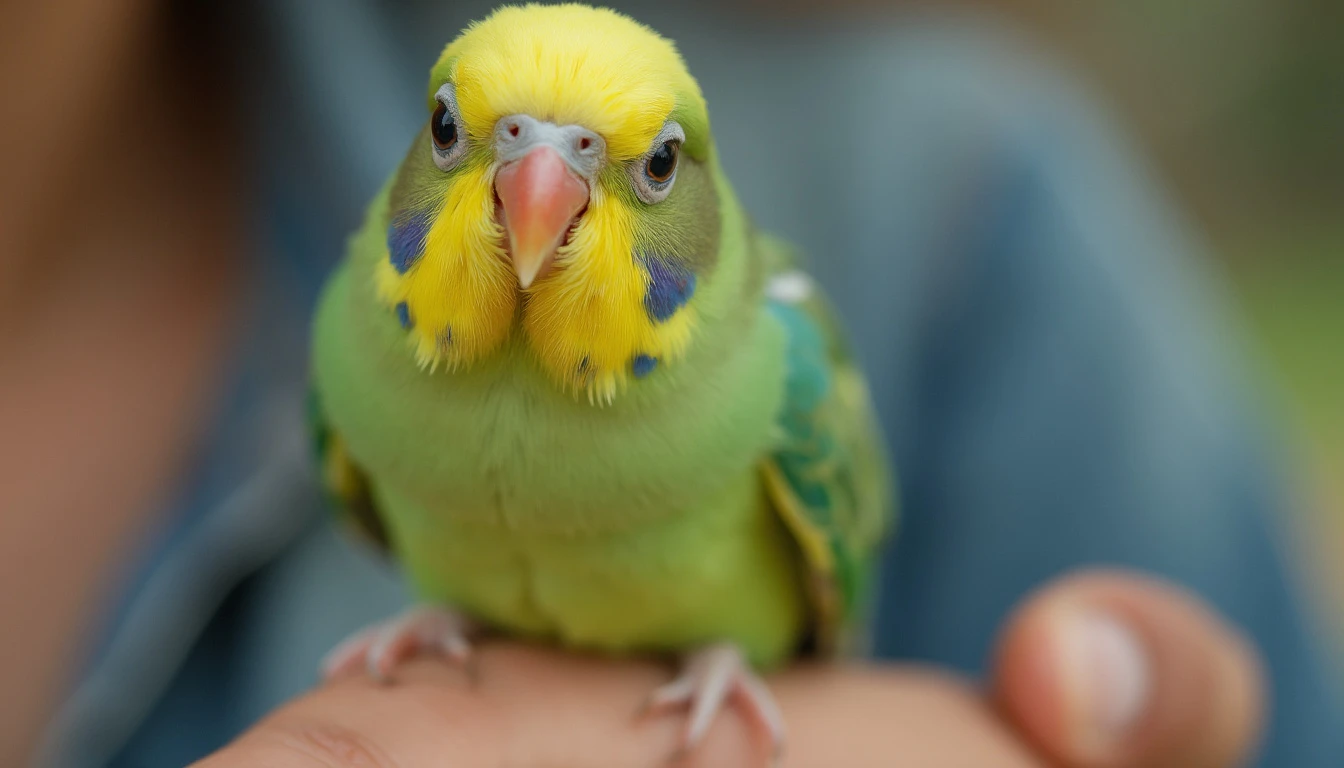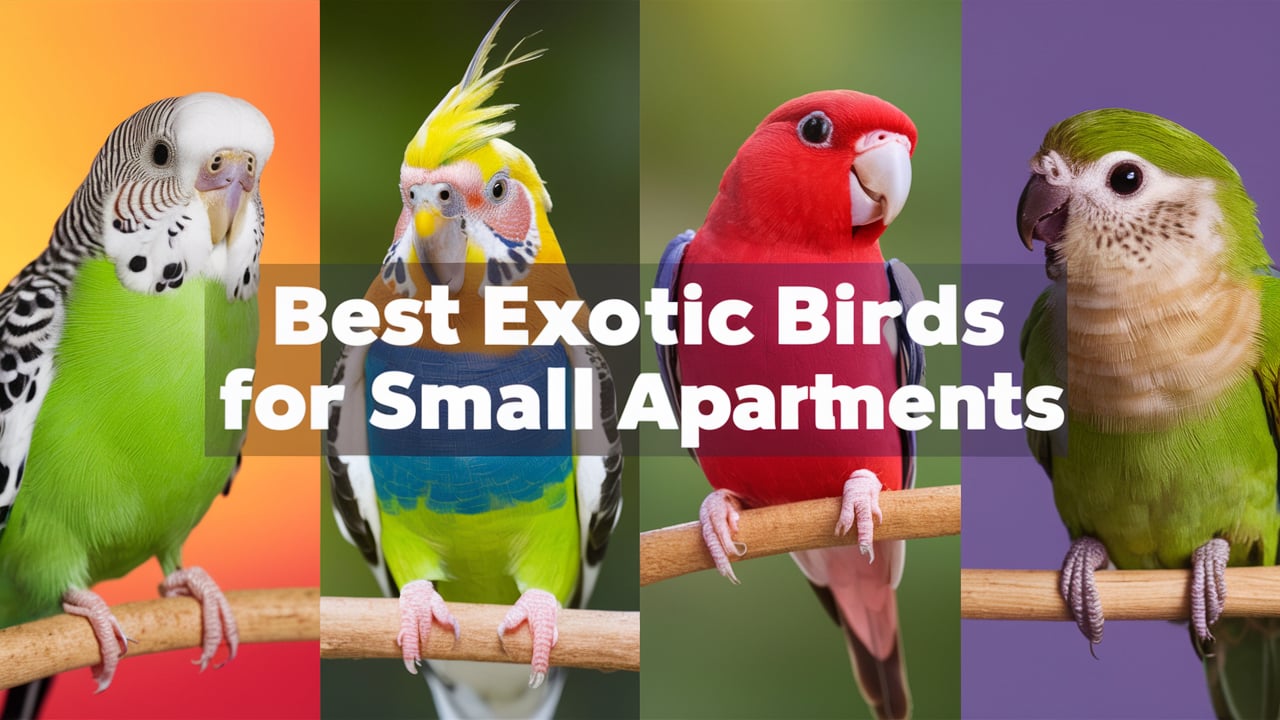Living in a small apartment doesn’t mean you have to forgo the joy of having a pet. Exotic birds can be wonderful companions, bringing color, personality, and even a bit of song to your home. If you’re considering adding a feathered friend to your small space, this guide will help you find the best exotic birds for small apartments. We’ll explore various species, their care requirements, and key considerations for apartment living, alongside personal insights and expert advice.
Why Choose Exotic Birds for Small Apartments?
Exotic birds are popular choices for apartment dwellers for several reasons:
- Compact Size: Many exotic birds are small and don’t require large enclosures, making them suitable for limited spaces.
- Low Maintenance: Compared to larger pets, birds often require less daily maintenance and can be easier to care for.
- Social Interaction: Birds are known for their engaging personalities and can form strong bonds with their owners.
Personal Insight
When I first moved into my apartment, I was hesitant about getting a pet due to the limited space. However, after adopting a budgerigar named Kiwi, I quickly realized how much joy a small bird could bring. Kiwi’s playful antics and cheerful chirping transformed my home into a lively space. This experience taught me that even small creatures can have a big impact on our lives.
The Best Exotic Birds for Small Apartments
1. Budgerigar (Budgie)

Overview
Budgerigars, commonly known as budgies, are one of the most popular pet birds worldwide. They are small, colorful, and relatively easy to care for.
Care Requirements
- Cage Size: A minimum of 18” x 18” x 24” is recommended for one budgie, with additional space for toys and perches.
- Diet: A balanced diet includes high-quality seed mix, pellets, and fresh fruits and vegetables. Offer cuttlebone for calcium.
- Social Needs: Budgies are highly social and thrive in pairs or small groups.
Enrichment Activities
- Toys: Provide a variety of toys like swings, bells, and chewable items to keep them mentally stimulated.
- Flight Time: Allow your budgie out of its cage for at least an hour each day in a safe space to fly and explore.
Health Concerns
Common issues include feather plucking due to boredom or stress. Regular vet check-ups can help monitor health.
2. Cockatiel

Overview
Cockatiels are affectionate birds with charming personalities. They are known for their distinctive crests and whistling ability.
Care Requirements
- Cage Size: A minimum of 24” x 24” x 36” is suitable for a single cockatiel.
- Diet: Their diet should consist of pellets, seeds, and fresh fruits like apples and leafy greens. Avoid chocolate and caffeine.
- Social Needs: Cockatiels are social creatures and enjoy interaction with their owners, often requiring daily out-of-cage time.
Expert Quote
Dr. Sarah Johnson, a veterinarian specializing in avian health, states, “Cockatiels thrive on interaction. A lack of socialization can lead to behavioral issues, so daily engagement is crucial.”
Enrichment Activities
- Whistling Games: Teach your cockatiel simple tunes or phrases to stimulate their mind.
- Obstacle Courses: Create a safe area with perches and toys for your cockatiel to navigate.
3. Lovebird

Overview
Lovebirds are small, affectionate parrots known for their playful nature. They are social birds that thrive in pairs.
Care Requirements
- Cage Size: A cage measuring at least 24” x 24” x 36” is ideal for a pair of lovebirds.
- Diet: A healthy mix of pellets, seeds, and fresh fruits is essential. Avoid avocado, which is toxic to birds.
- Social Needs: Lovebirds need companionship and should ideally be kept in pairs. They are very social and need interaction to prevent boredom.
Case Study
A study from the American Bird Conservancy found that lovebirds kept in pairs exhibited significantly less stress and more playful behavior, demonstrating the importance of social interaction in their care.
Enrichment Activities
- Foraging Toys: Use toys that require them to work for their food, simulating natural foraging behavior.
- Playtime: Allow them supervised time outside the cage to explore and play.
4. Parrotlet

Overview
Parrotlets are tiny parrots that pack a big personality. They are playful, curious, and can be quite feisty.
Care Requirements
- Cage Size: A minimum of 18” x 18” x 24” is adequate for one parrotlet.
- Diet: Offer a high-quality pellet diet supplemented with seeds, fruits, and vegetables.
- Social Needs: While parrotlets can be independent, they enjoy interaction and playtime with their owners.
Interesting Fact
Despite their small size, parrotlets are known for their strong personalities and can be quite vocal, making them entertaining companions!
Enrichment Activities
- Interactive Toys: Provide toys that encourage chewing and problem-solving.
- Social Interaction: Spend quality time interacting with your parrotlet to strengthen your bond.
Choosing the Right Bird for Your Apartment
When selecting the best exotic birds for small apartments, consider the following factors:
1. Space Availability

- Ensure your apartment can accommodate a suitable cage size for the bird you choose.
2. Noise Level
- Different birds have varying noise levels. Budgies are relatively quiet, while cockatiels can be more vocal. If noise is a concern, it’s important to research species that are known for being less noisy.
3. Time Commitment
- Birds require daily interaction and care. Assess how much time you can dedicate to your feathered friend. Birds can become bored and develop behavioral issues if they lack socialization.
4. Social Needs
- Some birds thrive in pairs, while others can be happy solo. Consider your living situation when choosing. If you work long hours, a more independent species or a pair of social birds may be ideal.
5. Allergies and Health
- Be aware of any allergies in your household. Birds produce dander, which can trigger allergies in sensitive individuals. Regular cleaning and the use of air purifiers can help manage this.
Additional Considerations
- Local Regulations: Check your local laws regarding pet birds, as some areas have restrictions on exotic pets.
- Adoption vs. Purchase: Consider adopting from a rescue organization. Many birds in shelters need loving homes and can make wonderful pets.
Conclusion
Choosing an exotic bird can enrich your life, especially in a small apartment. From the charming budgerigar to the affectionate cockatiel, there are many options that can thrive in limited spaces. By understanding each bird’s care requirements and personality traits, you can find the perfect companion to brighten your home.
Are you ready to welcome an exotic bird into your small apartment? Research reputable breeders or rescue organizations to find your new feathered friend. Feel free to share your experiences and questions about bird care in the comments below!
